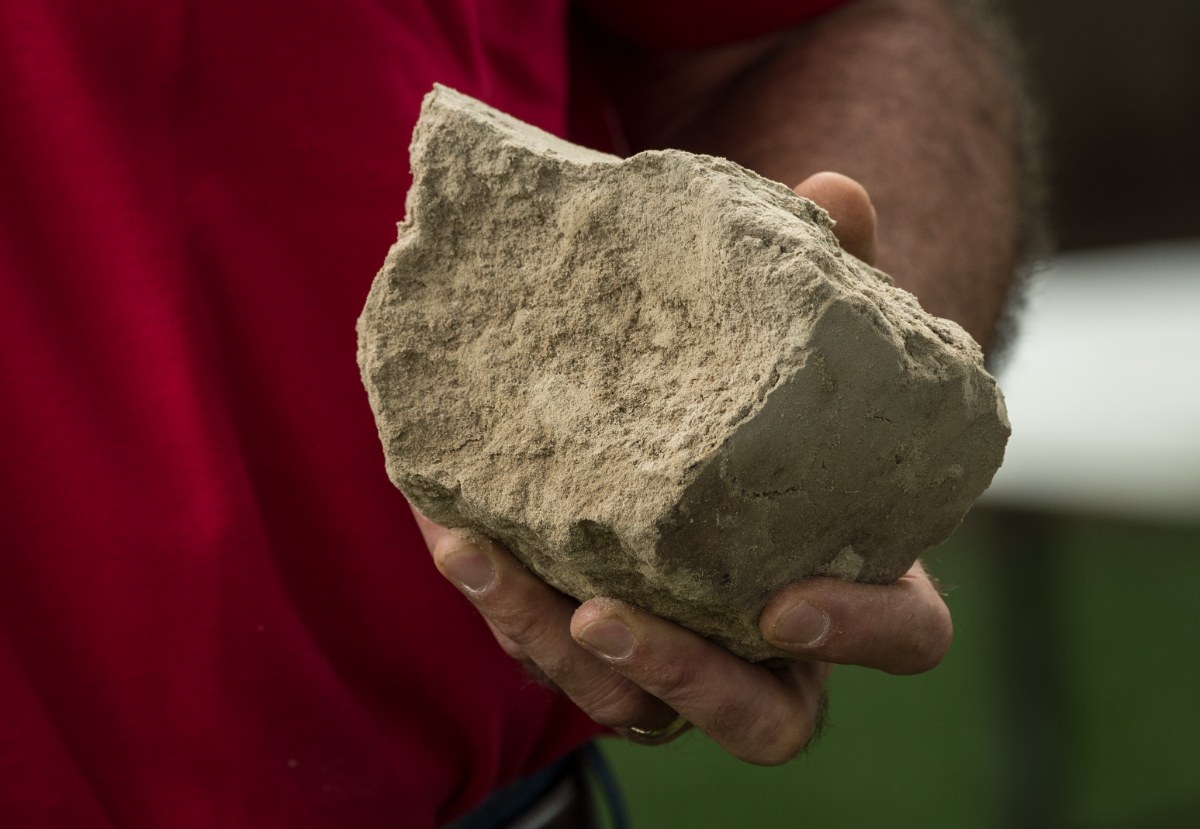
When soil particles are packed too tightly together, it hinders the movement of air, nutrients, and water in the soil, hurting the health of your lawn. Aeration is just one way to fix compacted soil.
“There is a misconception that aerification, on its own, fixes or reduces compaction,” says John Emerson Jr., turfgrass Extension agent at the University of Delaware Cooperative Extension. “This is not true. If you do not add soil amendments (compost, leaf litter, etc.) after aerification, there will be no change in the bulk density (compaction) of the soil.
“Aerification is simply a Band-Aid from the symptoms of compaction,” he says.
Other ways to fix compacted soil include adding compost, adding gypsum, or even planting the right types of plants and ground covers. With advice from turfgrass experts, we’ll walk you through the DIY steps for cultivating healthy, loose soil in your yard.
First, make sure you have compacted soil (see Signs You Have Compacted Soil), then we’ll show you how to fix it. Learn How to Test for Compacted Soil to help you determine your soil’s condition.
1. Core Aeration
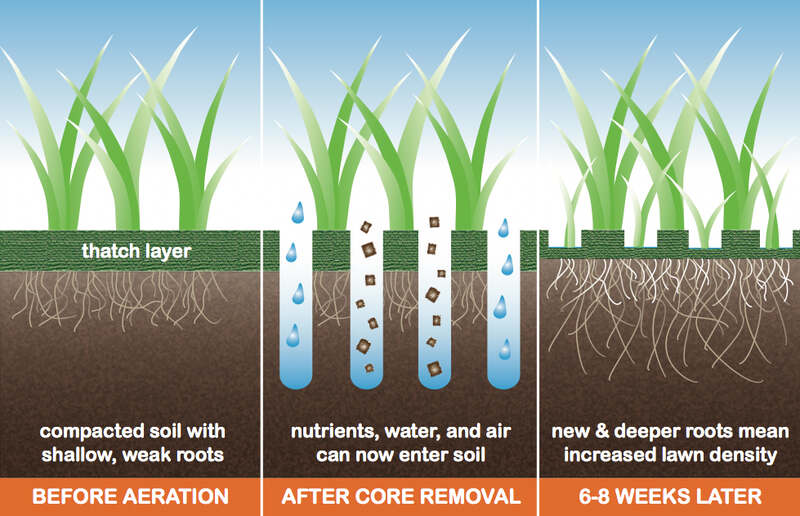
Aeration makes small holes in the soil that improve absorption and drainage. It also loosens the soil structure, helping roots stretch out, but you’ll need to combine this with soil amendments to fix compacted soil.
Best for: Yards of any size, particularly yards with clay or silty soils that are most prone to compaction.
Effort: Moderate
Timeline: 30 minutes to a few hours
What you’ll need:
- Manuel aerator
- Electric or gas-powered aerator (best for large areas)
See Related:
— What is Core Aeration?
— How to Aerate a Lawn
— When to Aerate Your Lawn
“Aerify during active growth periods,” says Becky Grubbs Bowling, extension specialist at the University of Tennessee. These are the times of year that she recommends aerating:
- For cool-season grasses, aerate in the fall.
- For warm-season grasses, aerate in the late spring to early summer.
Aeration requires expensive equipment and takes time, so hire a LawnStarter pro to aerate your lawn and save you the hassle of fixing compacted soil yourself.
2. Loosen Soil Manually
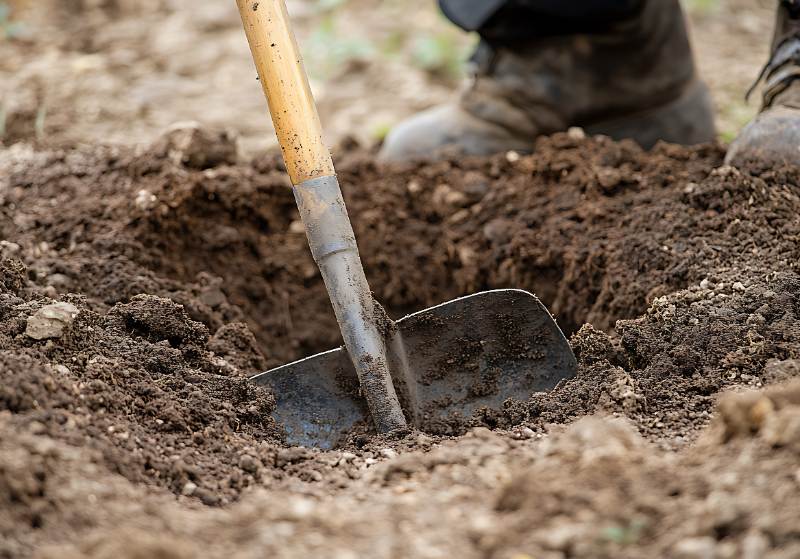
Sometimes, soil is so compacted that regular home-use aerators bounce off the ground and barely chip the dirt. If your lawn is too difficult to aerate, you might need to dig the soil up with a shovel or a rototiller.
Best for: Small yards, around delicate plants, in plant beds, or areas where aerators can’t reach
Effort: High
Timeline: 30 minutes to a couple hours
What you’ll need:
You will need a tool to till with:
- Garden fork
Rototiller - Shovel
Manual aerator - Broad fork
How to do it:
- Garden fork: Till your soil once to loosen compact dirt. Push the tines of a garden fork into the ground. Rock the fork back and forth to loosen compacted soil. Don’t over-till. It can worsen compaction.
- Rototiller or shovel: Use a rototiller or shovel to dig up the surface soil. By disturbing the soil, you allow nutrients, water, and air to filter into the soil again.
After tilling, add compost and mix it into the soil with a rototiller or shovel. Then cover it with topsoil.
3. Compost
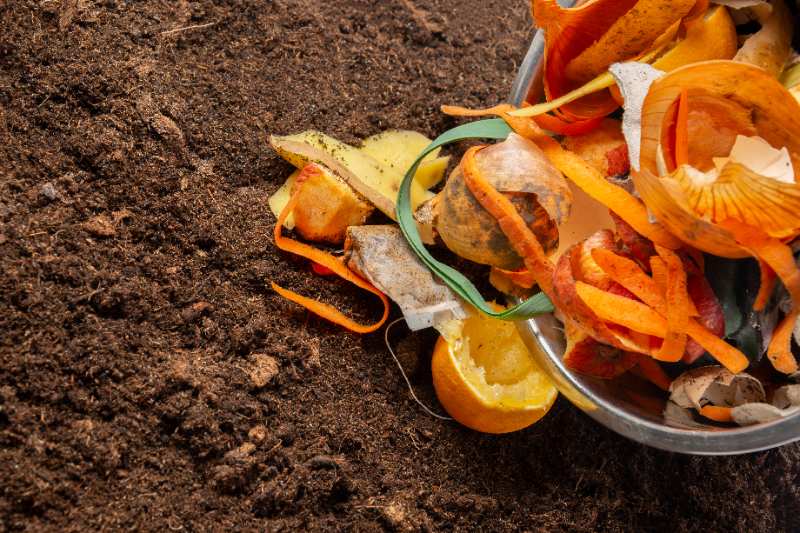
Compost improves the soil texture by adding organic matter. Organic matter acts as a binding agent, allowing soil particles to form small clumps and create openings in the soil.
“Compost can improve the tilth (the condition of tilled soil) and reduce compaction of the heaviest clay soils and increase the water retention and nutrient holding capacity of the sandiest of soils,” Emerson says.
Best for: Mild soil compaction
Effort: Moderate
Timeline: 30 minutes to a few hours
What you’ll need:
- Compost
Gardening gloves
How to do it:
New builds or starting with bare soil: The easiest way to add organic matter is to mix compost into your soil.
“Compost can be added to a depth of 0.5 inches up to 6 inches” in new-build subdivisions or total lawn renovations, Emerson says. “You must remember that the deeper the compost layer, the deeper the tillage should be. Once sufficiently mixed with the existing soil, final grading and planting can begin.”
Experts at the University of Florida say that a 1-inch layer of compost incorporated while tilling is usually enough to improve the top 6 inches of soil.
Existing lawns: You can add compost as topdressing after aerating your lawn, though the effects will be slower.
On existing lawns, “compost can be topdressed to a depth of 0.25 inches to 0.5 inches,” Emerson says. Topdressing 2 or 3 times “with a high quality compost should be sufficient to improve the soil and reduce compaction … in the root zone.”
See Related:
— Topdressing a Lawn: The Benefits and How to Do It
— How to Use Compost in Your Yard
4. Organic Mulching
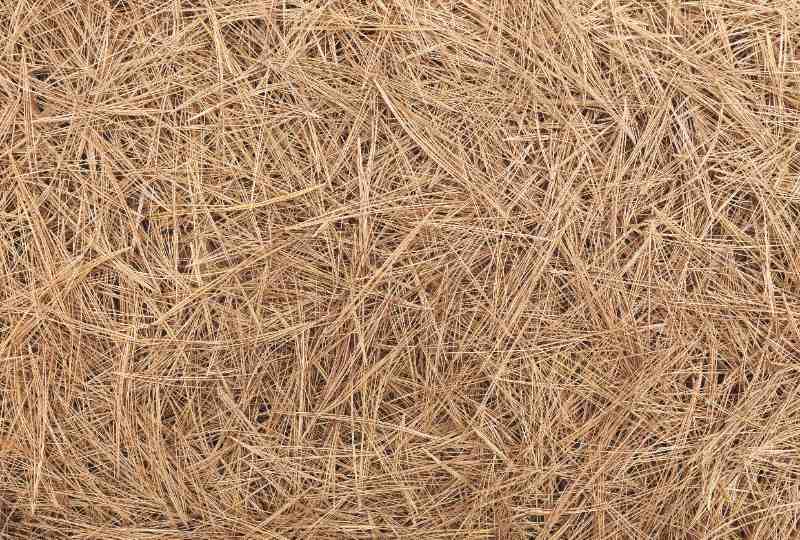
A thick layer of organic mulch keeps the soil in garden beds shaded, moist, and protected from extreme temperatures. Mixing organic matter into the ground also creates a haven for earthworms and other underground life that aerate the soil.
Best for: Plant beds and lawns
Effort: Low
Timeline: Up to an hour or more
What you’ll need: Here are the types of organic mulch you can use:
- Straw or pine needles
- Dry, chopped leaves
- Wood bark or wood chips
- Grass clippings
How to do it:
Here’s how to fix compacted soil in your lawn or garden beds:
- On garden beds, spread 2 to 3 inches of mulch.
- On lawns, leave the grass clippings as mulch, but make sure the layer is no more than 1 inch thick.
See Related:
— How Deep Should Mulch Be?
— How Often Should You Replace Mulch?
— Where to Get Free Mulch
5. Add Gypsum
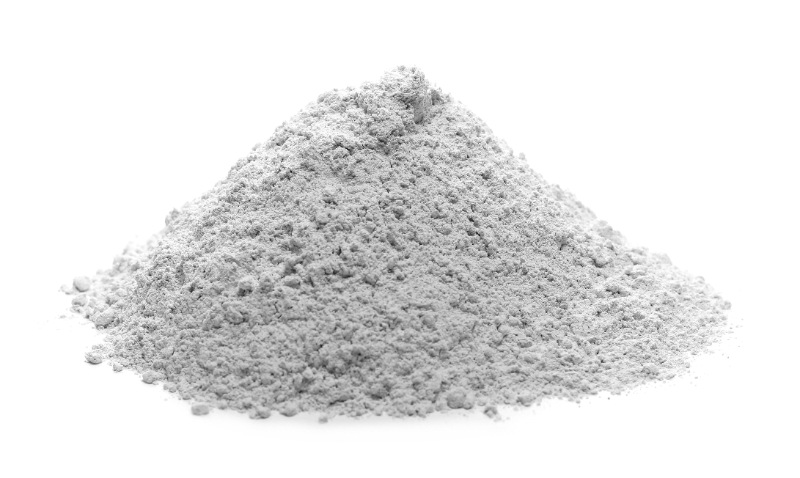
Gypsum is particularly useful in the Southeast and in arid regions where clay and saline soils are common. While gypsum can’t fix all types of soil, it can be applied to help fix compaction.
Best for: Gypsum can alleviate compaction only in soils rich in clay or with high sodium levels.
Effort: Low
Timeline: 30 minutes to 2 hours
What you’ll need:
Lawn spreader
Gypsum
How to do it:
Before applying gypsum to compacted soil, talk with the local Extension Office experts to ensure it’s the right choice. According to experts at Louisiana State University, “Adding gypsum to sandy or nonsodic soils (low in sodium) is a waste of money and natural resources and can have negative impacts on plant, soil, and ecosystem health.”
Here’s how to apply gypsum to your yard:
- Use a spreader to apply 4 to 5 pounds of gypsum per 100 square feet in your lawn.
- Water immediately after application.
6. Keep Soil Planted
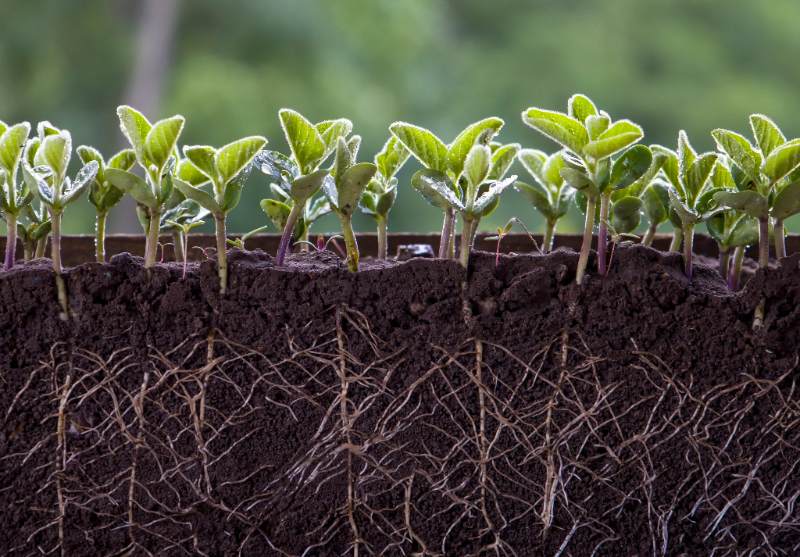
Plant roots are great for repairing soil compaction. They dig into the ground and enlarge any openings, improving the soil structure. Some stubborn taproot plants, like dandelions and plantain, can even break heavily compacted soil that you have difficulty splitting with a shovel.
Best for: Plant beds or lawns
Effort: Moderate
Timeline: 30 minutes to an hour
What you’ll need: Plants that can naturally break compacted soil, such as ground covers with extensive root systems and taproots.
Some species that can help you solve the compaction problem are:
- Daikon radishes
- Dandelions (trim the flowers before they go to seed to avoid spreading)
- Alfalfa
- Chicory
- Fenugreek
- Comfrey
- Yarrow
- Mustard
Look for plants adapted to the local climate and soil. If your yard has waterlogged areas (causing compaction), plant species that can handle damp soil.
How to do it:
Install plants with extensive root systems or taproots to alleviate compaction in your soil.
Ground covers also improve soil health by keeping it shaded and moist. Dead leaves, stems, and roots decompose into organic matter, providing soil life with precious food.
See Related:
— How Dandelions Benefit You and Your Yard
7. Improve Your Lawn Care
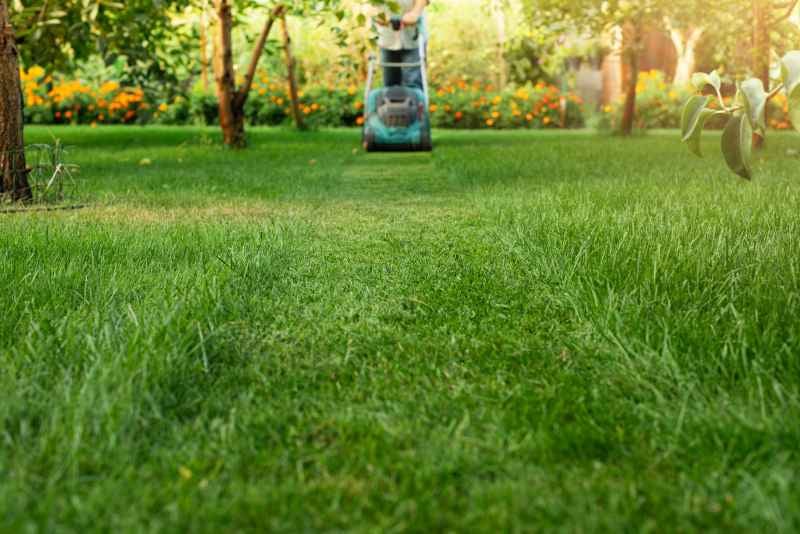
Good lawn care is a way you can prevent soil compaction and keep it from getting worse. “Some of the most affordable steps homeowners can take begin with adjustments to cultural practices,” Bowling says.
Best for: All yards
Effort: Moderate
Timeline: About 1 to 2 hours a week
What you’ll need:
- Lawn mower
- Hose or irrigation system
- Any other desired lawn care tools or products, such as a manual aerator
How to do it:
Here are some basic lawn care practices Bowling recommends to prevent soil compaction:
- Mowing lawns taller and more frequently to encourage deeper root growth
- Deep, infrequent watering
See Related:
— How Often to Water Grass in Summer
— Best Time to Water Your Grass
FAQ About How to Fix Compacted Soil
What’s the Cheapest Way to Fix Compacted Soil?
Loosening soil manually is the cheapest way to fix compacted soil, since all you need is a garden fork.
For other ways to fix compacted soil, pricing depends on the method, the size of your yard, and the scope of your project:
| Method | Cost |
| Cost of aeration | $107 to $202 |
| Cost of loosening soil manually | $20 to $55 for a garden fork |
| Cost of compost | $15 to $100 per cubic yard |
| Cost of adding organic mulch | $192 to $402 per cubic yard |
| Cost of gypsum | Around $10 to $30 a bag |
| Cost of adding Landscaping plants | $5 to $53 per plant |
Which Method Works the Fastest for Severe Compaction?
The fastest way to fix severe compaction is to remove the hard soil and replace it. This is the most aggressive and expensive approach, but it is helpful when you’re planting a shrub or a tree and must treat the compaction in a limited area.
Filling a hole with loamy soil can be especially helpful in areas with heavy clay soils. “Heavily compacted clay soils … can take significantly longer to improve than coarser-textured soils with milder compaction or those undergoing renovation,” Bowling says.
Can I Use Multiple Methods Together?
Yes, you can use multiple methods together to fix compacted soil. “Using multiple methods is often the most effective approach,” Bowling says. “Most landscape issues, including soil compaction, benefit from an integrated or holistic strategy.”
Therefore, a combination of modifying irrigation practices, reducing foot traffic, aerating your lawn, and incorporating soil amendments will reduce soil compaction and improve the health of your soil.
Hire a Lawn Care Pro to Fix Your Compacted Soil
Compacted soil is a problem that can be fixed with aeration, installing plants with extensive root systems, or adding compost or organic mulch.
If you don’t want to deal with fixing compacted soil, lawn mowing, or any other tedious lawn care chore, LawnStarter can connect you with a local lawn care pro to take care of your yard maintenance or aerate your yard to reduce soil compaction.
Sources:
- Becky Grubbs Bowling, Extension specialist at the University of Tennessee, Knoxville, TN. Personal interview.
- “Gypsum to Soften Hard Soil? Probably Not…” By J. Cheston Stevens Jr., associate professor, and Thomas J. Koske, Extension specialist. LSU AgCenter.
- John Emerson Jr., turfgrass Extension agent at the University of Delaware Cooperative Extension, Newark, DE. Personal interview.
- “Soil Compaction in the Urban Landscape.” By Amy L. Shober, Extension specialist, Geoffrey C. Denny, former assistant professor, Alexander J. Reisinger, associate professor, and Eban Z. Bean, Extension specialist. University of Florida.
- “Soil Preparation.” By Joseph Masabni, professor and Extension specialist. Texas A&M AgriLife Extension.
- “The Myth of Gypsum Magic.” By Linda Chalker-Scott, horticulturist and associate professor. Washington State University.
Main Photo Credit: U.S. Department of Agriculture / Flickr / PDM 1.0